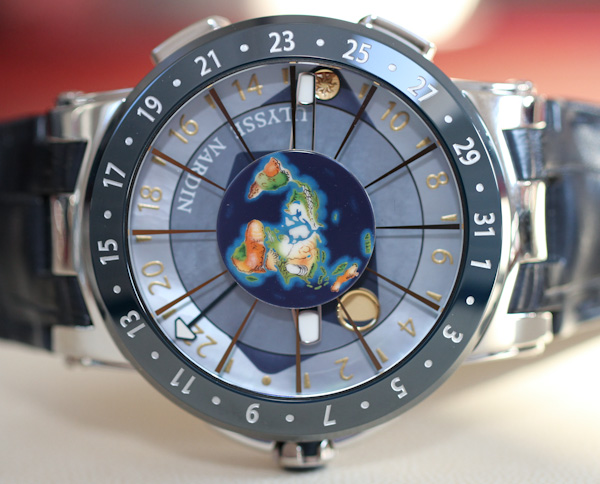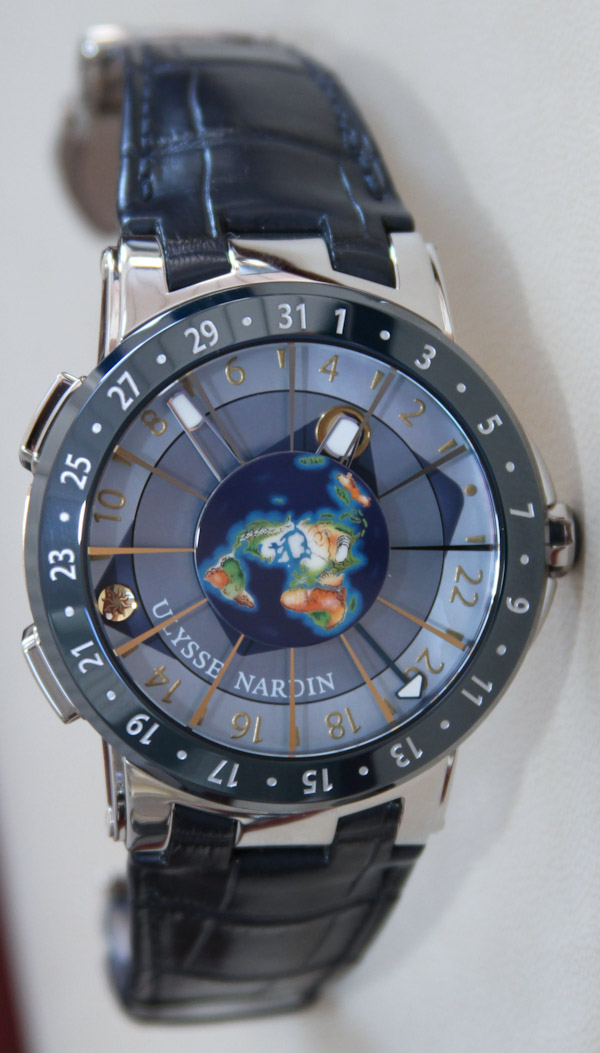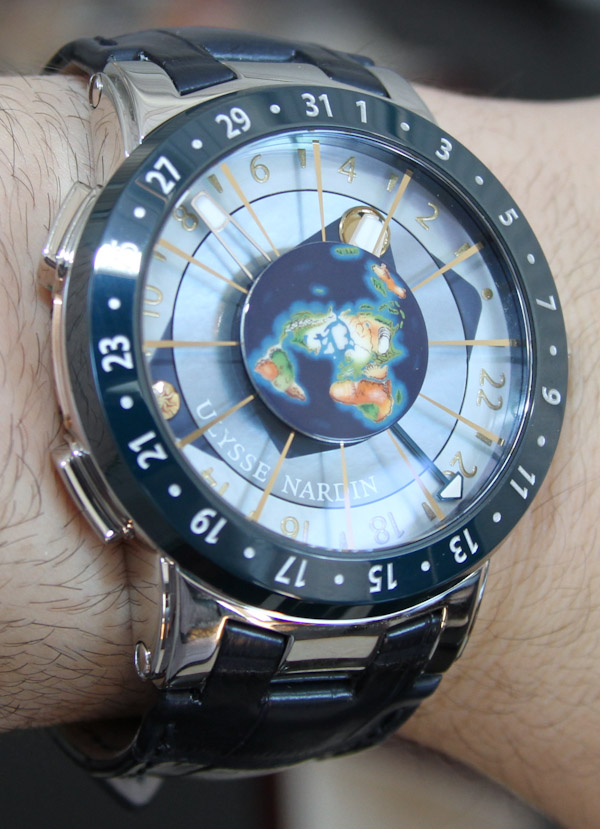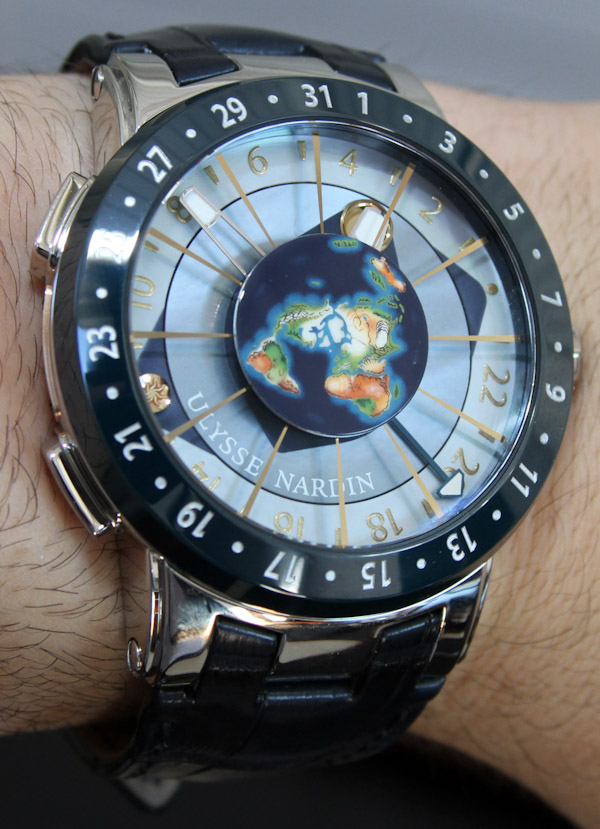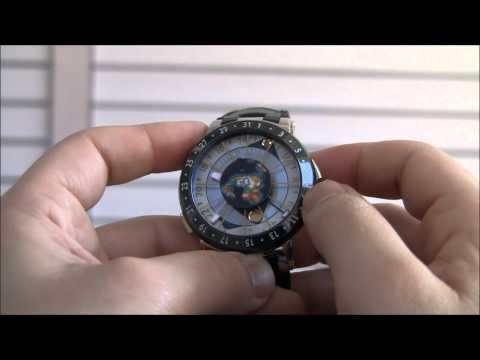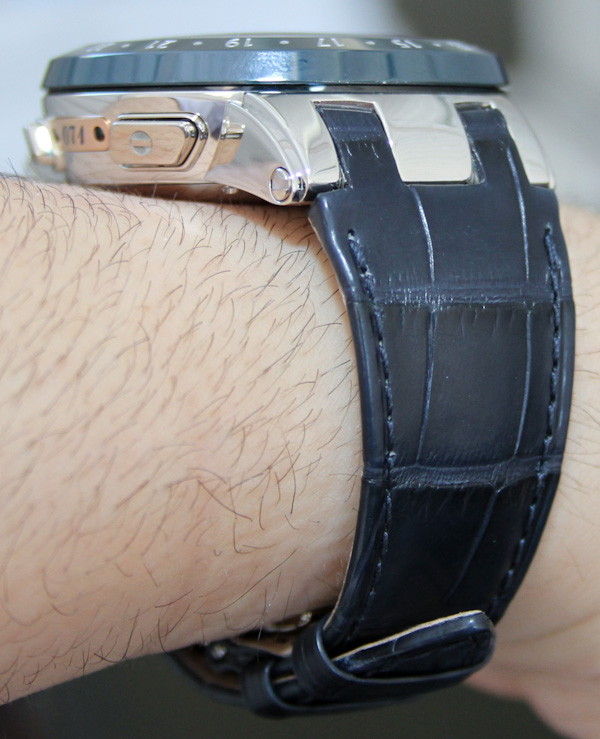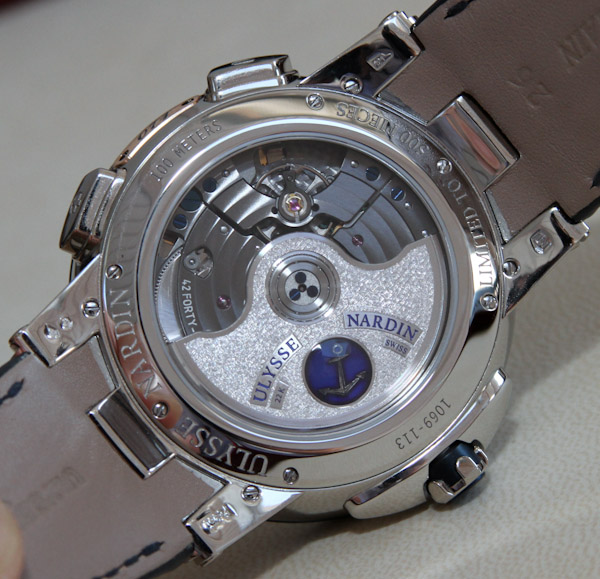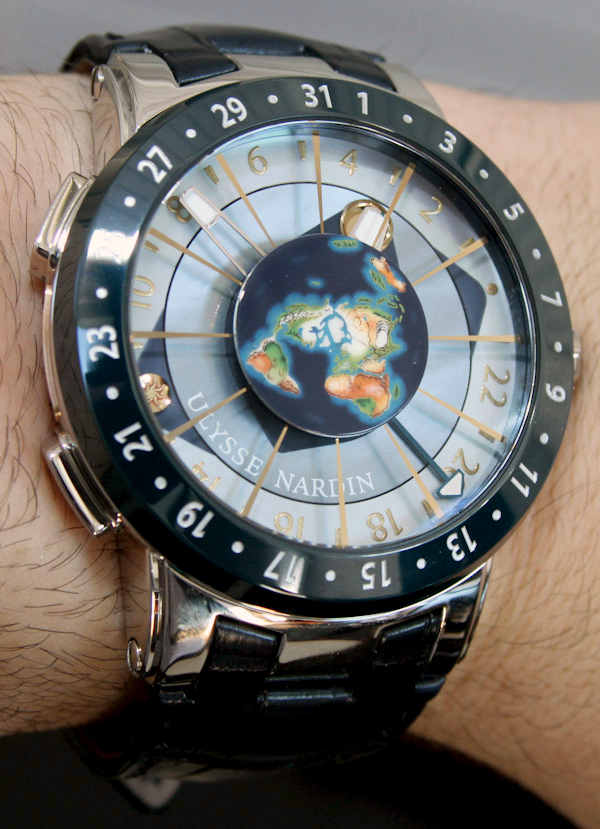
Like anyone with a penchant for finding science fascinating, I am curious about the sky. Celestial movements up above might not matter much in my daily life, but that doesn’t stop me from being interested in most things related to astronomy. For me it is a constant reminder of what our place as humans is in the universe. We are but a speck in the larger scale of the cosmos, and that is somehow comforting to think about when I begin to take my own life too seriously. Astronomy is also the basis of all time. No, not from a physics standpoint exactly, but certainly from a social measuring standpoint. All forms of civilly measured time relates back to some predictable pattern in the sky. For that reason, timepieces and astronomy have always been intrinsically linked.
Ulysse Nardin was an early proponent of modern celestial watches. In the 1990s the brand produced and pushed their Planetarium trilogy of watches that solely sought to reproduce in timepiece form, unique devices meant to track and display the various cycles of the sky. Even as oddly designed niche items, they fared very well from a sales perspective. Since then, Ulysse Nardin has always had a unique relationship with astrological watches. My favorite is the Moonstruck which I am about to discuss, and I originally discussed the Moonstruck back in 2010 here with additional information that you’ll find useful.
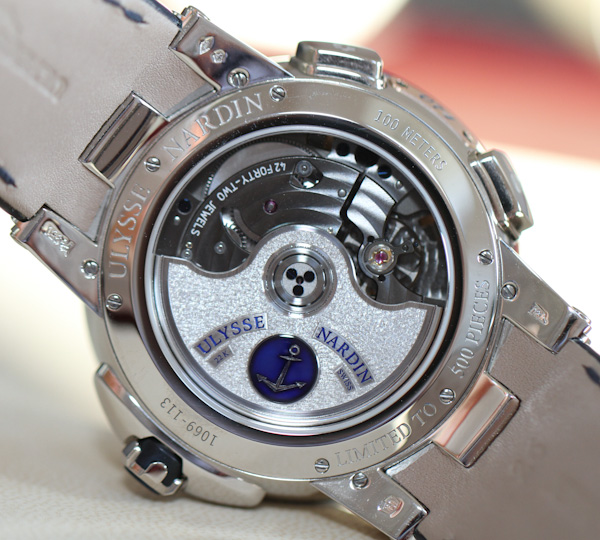
The reason Ulysse Nardin’s Moonstruck is my favorite astrological watch is two-fold. First, it is visually attractive and not terribly complex to read or understand. Most astrological watches are confusing and have more hands and indicators than anyone can seem to keep track of. The Moonstruck is by no means minimalistic, but it certainly offers a comparatively clean and straight-forward dial. My second reason for preferring the Moonstruck is because of the complications. The earth-centric display offers not only information that can be visually obtained versus abstractly understood, but information that is most salient to those with a perspective from earth. As a benefit, the Moonstruck pretty much only includes purely natural data without socially created concepts such as zodiac signs and civil calendar systems. Aside from our civil time and date (which we tend to need in a watch), the information is rather pure.
Central to the design is the large painted earth-disc in the center of the dial. This is not just there for show, but exists to indicate how to interpret the information around the earth. What the Moonstruck does is visually show you where the sun and moon are located from an earth-based perspective, and as well as the phase of the moon. Tangential to this are also indications of neap or spring tides. The disc which tracks the path of the sun in relation to the earth doubles of course as a 24 hour GMT indicator. The genius of the Moonstruck is that it offers so much interesting information in a simple and mostly-visual manner using so few elements on the dial.
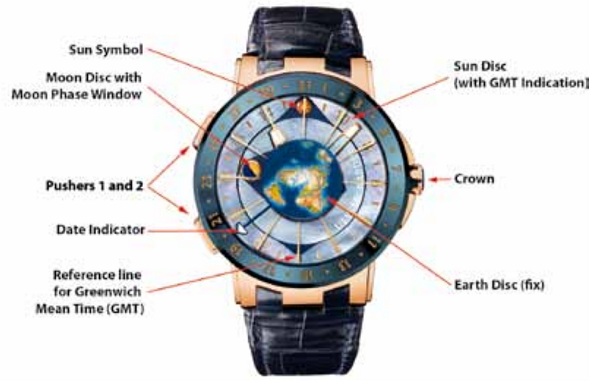
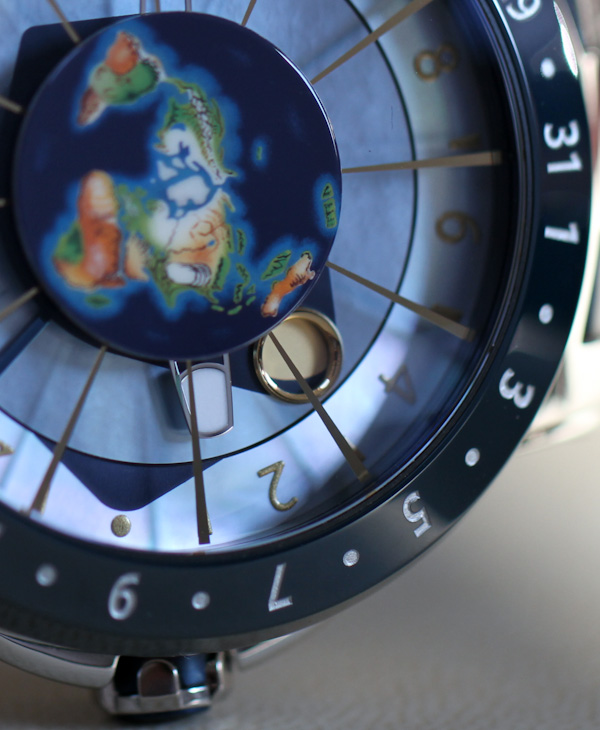
The development behind the Moonstruck is of course thanks to Ulysse Nardin’s noteworthy relationship with Ludwig Oechslin – a man who all watch collector’s should be familiar with. He is also responsible for the famous Planetarium trilogy collection. What he has created with the Moonstruck is a beautiful, useful, astrological watch that allows the wearer to also have a GMT timepiece with the date. The pushers on the left side of the case are for quickly advancing the hour hand back and forth making the Moonstruck also an excellent travel piece. This same functionality is also seen on Ulysse Nardin’s famous Dual Time movements.
While I am not going to get into the math, the design of the caliber UN 106 is such that the celestial indicators are extremely accurate. The moonphase indicator only requires adjustment each 120 years. Oechslin is a known stickler for this type of accuracy. Of course the watch needs to remain running for all this to function. So Ulysse Nardin sells it with a watch winder case. I also like that the dial is practically a lesson in basic elements of how the earth, sun, and moon work together. You can not only see the phase of the moon, but the phase of the moon as it relates to its position in context with the sun. Thus, the moon not only revolves around the earth, but it also changes phases, which of course is related to its position relative to available sunlight. The concept brings a serious smile to my face. Ulysse Nardin includes a rather straight forward instruction manual on how to set the watch – which can pretty easily be done by a non-trained owner. First, they include a chart of full moon times so that when setting the moon phase you know what time precisely it will be full. Second, there is a very thorough Moonstruck instruction manual that details how to use and set the watch. It is impressively comprehensive.
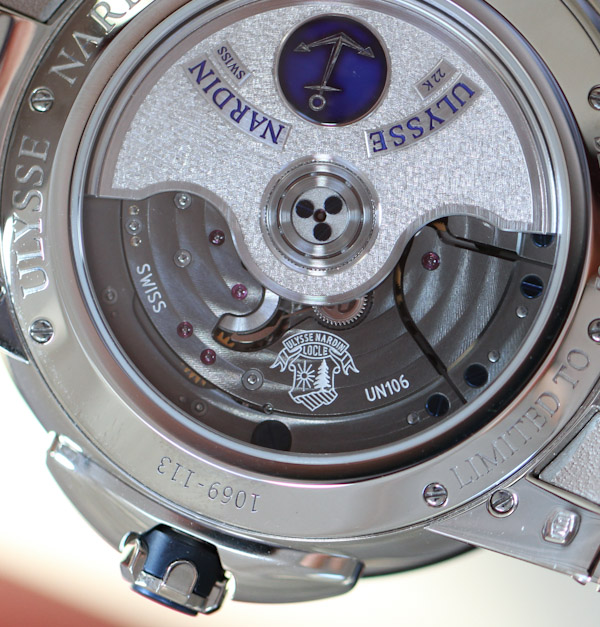
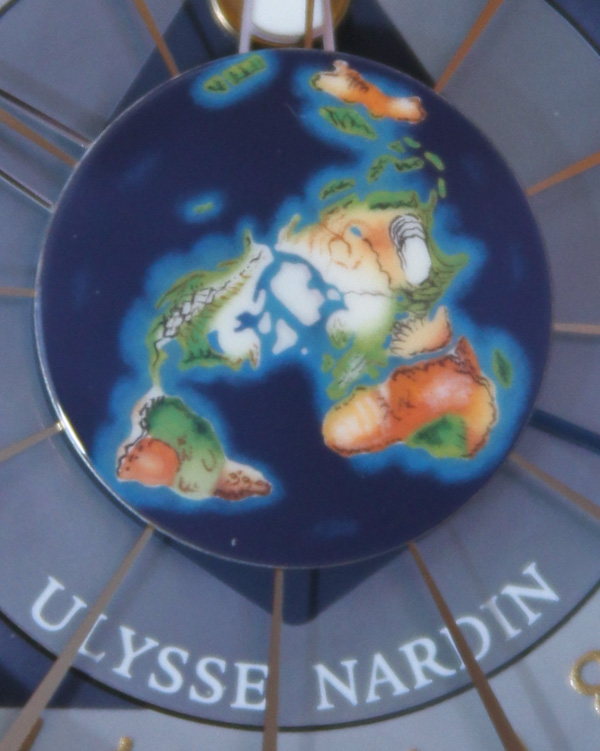
OK, so let’s go over what functions the Moonstruck watch has that I find of value or at least interesting. I am not terribly interested in the tidal indicators because it doesn’t affect me much since I don’t live on the beach. Perhaps some day… The time and date are of course useful to me. I was worried at first that the mostly hidden hands would be difficult to read, but Ulysse Nardin coats them with lume and makes them nice and fat, and prominent. The date is useful though the hand keeps making me think it is a GMT hand. I need to look at the sun for that, and remind myself that it is not pointing to a date. This is probably the only watch I’ve seen with the date indicators on the bezel. Though, in a piece such as this I suppose it is fitting. The GMT “sun” hand is useful as well, and the quick hour hands change for traveling is also useful. While the moon phase indicator isn’t useful to me (or anyone really) it is applied in such a manner as to make is so educational it sits at the core of the design. The name of the watch again is “Moonstruck.”
In my opinion, the dial is also beautiful. I am among those men who like a little mother-of-pearl on watches, and the dial discs on the Moonstruck are mother-of-pearl. The middle earth section is said to be hand-painted and is supposed to be a top-down view of the planet. While being painted means it lacks a lot of precise detail, it does have an artistic charm to it. Around the dial is a blued-steel bezel. This particular version of the Moonstruck is in platinum. There is also an 18k rose gold model. Both are limited editions.
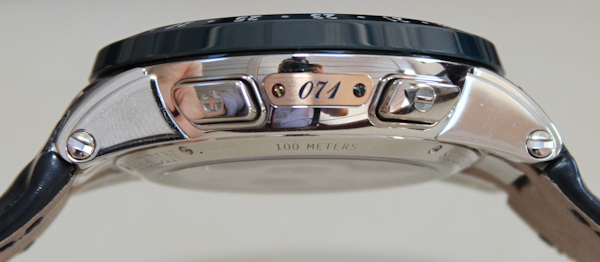

I am actually impressed that the case is water resistant to 100 meters. Not typical from a watch in this class. The case is 46mm wide, which is hefty, but not huge. Though especially in platinum the piece can be considered heavy by some people. Attached to the watch is a blue colored leather strap with matching platinum or gold deployant.
You can view the Ulysse Nardin made caliber UN 106 automatic movement through the sapphire caseback window. The movement finishing is lovely, and by most accords the movement is a successful mixture of modern and classical elements. The rhodium plated bridges are beautifully polished and help the 22k white gold automatic rotor stand out beautifully. The rotor has a unique texture applied to it as well as a nice blue set of Ulysse Nardin markings. The UN 106 movement has a power reserve of about 50 hours and is also COSC Chronometer certified.
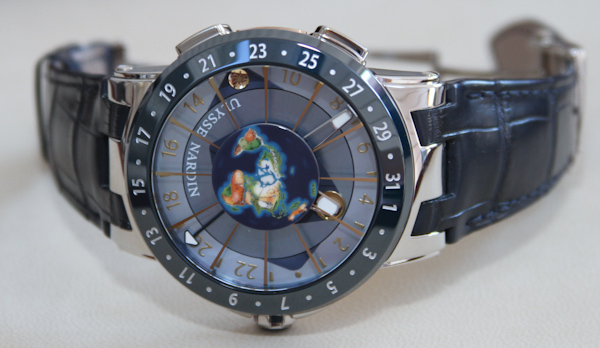
In all, the Moonstuck is a wonderfully unique and complex watch. On the one hand it has an exclusive look and set of functions designed by a brilliant man, being also useful and luxuriously attractive. On the other hand it is very much a daily wear watch. The case is comfortable and durable being essentially a slightly larger version of the case on the Ulysse Nardin Executive Dual Time watch (reviewed here). It goes without saying that there is next to nothing else on the market quite like it, a description Ulysse Nardin seems to achieve rather often.
Given the fact that I’d wear it daily without fuss, the price for the Moonstruck is the most difficult thing for most people to accept. Ulysse Nardin also produced just 500 pieces of each version (one in gold, one in platinum) as a limited edition. The 18k rose gold Moonstruck retails for $97,500, while this platinum version retails for $125,500. Even with discounts, each is still priced like a nice new flagship Audi or Mercedes automobile (which I will remind you don’t offer this type of celestial information).

